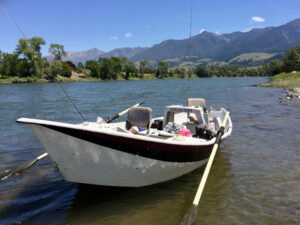Waters We Fish
Yellowstone River
The Yellowstone River, originating from the southern reaches of the Absaroka Mountain range in northern Wyoming, spans approximately 680 miles before converging with the Missouri River in western North Dakota. Renowned among anglers, the Yellowstone holds the distinction of being the longest free-flowing river in the contiguous United States, boasting pristine waters teeming with a diverse array of aquatic life.
Our guided fly fishing floats on the Yellowstone River predominantly focus on the captivating stretch between Yankee Jim Canyon, just north of Gardner, MT, and Reed Point, MT. This segment, particularly the upper portion traversing through the picturesque Paradise Valley, is known for its breathtaking natural beauty. Picture-perfect vistas unfold as the river meanders through the valley floor, which spans approximately 2-5 miles wide. To the east, the majestic Absaroka Mountains provide a stunning backdrop, while the Gallatin Mountains grace the western horizon.
At Montana Trout Company, we specialize in guiding anglers along the storied waters of the Yellowstone River, providing expert insights and personalized excursions tailored to the unique characteristics of this iconic waterway. Whether you’re seeking to hook into a trophy brown trout or experience the thrill of catching a rainbow trout on the fly, our seasoned guides are dedicated to ensuring an unforgettable fly fishing adventure amidst the pristine beauty of the Yellowstone River.
Join us as we explore the legendary waters of the Yellowstone River, where every cast holds the promise of adventure, and every encounter with a brown trout or rainbow trout is a testament to the enduring allure of fly fishing in Montana’s wild and scenic landscapes.
Read more about the Yellowstone River
Below Livingston, the river enters a much larger valley as it heads east and the mountains fade from being right in your face to being further off in the horizon as the valley widens. The vast majority of the river banks are lined with old growth cottonwood trees that provide shaded spots to stop for a break on a hot summer day. Wildlife of the four legged kind (deer, elk, bear, and pronghorn) can be seen from time to time throughout the entirety of our guiding territory. Birds of prey are heavily populated on the Yellowstone and on some days it’s not uncommon to see bald eagles, golden eagles, red tail hawks and osprey all on the same float. In terms of water volume, the Yellowstone is one of the largest rivers we guide on. Average summer time flows start around 10k cubic feet/second (CFS) and end in the fall around 2k CFS.

Fishing on the Yellowstone typically gets good around the end of June (runoff dependent) and produces quality fishing until the end of October. Spring fishing (pre runoff) can be productive at times but other rivers in the area tend to produce better spring results. Nymphing (sub surface flies) dry fry fishing (top water flies) and tossing streamers (baitfish flies) can all be effective approaches throughout the season. Generally speaking we tend to do more nymphing the first half of the season and more dry fly fishing the second half of the season. One of our favorite things that we look forward to each season is the dry fly hopper fishing that comes later in the summer months and into early fall. The Yellowstone river is also our favorite place to target large brown trout on big articulated streamers. The types of fish that can be found in the Yellowstone are rainbow trout, brown trout, native cutthroat trout, cutbow trout (hybrid between a rainbow and cutthroat) and native mountain whitefish. The Yellowstone is hands down our favorite river to fish and one that every angler should experience at least once in their lifetime!
Madison River
The Madison River is one of the most iconic trout rivers of the west! Its outstanding scenery, high fish counts and potential for a trophy fish make this river a great option for anglers of all skill sets. Its origin lays within Yellowstone National Park were the Gibbon and Fire Hole Rivers merge. Shortly after the river leaves the park it dumps into Hebgen Reservoir. As the river exits the reservoir through Hebgen Dam (as a tailwater), it then flows shortly before entering Earthquake Lake, which naturally damed as a result of an earthquake in 1959. Once the river leaves Quake Lake, the water starts its voyage north (approximately 60 miles) until it hits the Ennis Reservoir. The Ennis dam that creates this reservoir is considered the dividing line between the upper and lower sections of the Madison River.
Read more about the Madison River
The Upper Madison is also known as the 60 mile riffle. To many anglers the water all looks the same. A day in a boat with one of our experienced guides will prove differently. Average water depth is 2 to 3 feet deep with occasional deeper holes where fish tend to hide. Anglers fishing this section of the river will likely fish towards the banks, down the center and around large boulders that were left behind by the glaciers that created the valley. Fish can literally be found from bank to bank and everywhere in between. Primarly the fish targeted in this section are browns and rainbows however cutbows, cutthroats and mountain whitefish can also be found. Spring days on the Madison tend to be the most productive of the year. Nymphing is the most common approach during the spring months and as the waters warm and the bug life starts to emerge for the summer season, dry fly fishing becomes more productive during certain times of the day. Streamer fishing this section of the river is one of our favorite things we look forward to each season. Spring and fall seem to produce the best results, but summer time can also produce large hungry trout on the big meaty bugs. The famous Salmon Fly hatch that takes place each June is also an extremely popular attraction. It is at this time that our largest fly of the year hatches.
As you float down the Upper Madison one of the first things you will notice is that the views are big. The Madison Valley ranges from 3-12 miles wide and has a very open feel. Views of the Madison Range on the east side and Gravelly Range on the west side are from a distance, yet still spectacular. Water flows on this section of the river start in the spring around 3000 CFS and end in the fall around 1000 CFS. This section of the river is dam controlled and as a result flows are fairly steady throughout the season.
The Lower Madison starts below the Ennis Dam and flows for approximately 40 miles before merging with the Jefferson River to start the beginning of the Missouri River. Typically fishing on this section of the Madison only takes pace in the spring and late fall. Water temps in this particular section rise to unsafe levels for the fish once summer sets in and at that point we leave these fish alone and head to other waterways. One of our favorite hatches that takes place in this section is the Mothers Day Caddis hatch. Each spring millions of Caddis emerge from the bottom of the river and the fish can’t seem to get enough. During this time a size #16 elk hair caddis trailed by an emerging caddis pupa can be deadly. Browns, rainbows, cutthroat, cutbows and mountain whitefish can all be found in the Lower Madison with rainbows being the most common.
Gallatin River
Flowing from the pristine wilderness of Yellowstone National Park’s northwestern reaches, the Gallatin River emerges as a premier destination for fly fishing enthusiasts in Bozeman, MT. As a freestone river, the Gallatin embodies the untamed spirit of the Montana wilderness, offering anglers a chance to connect with nature in its purest form.
Tracing its course southward from its Yellowstone origins, the Gallatin River meanders through the rugged terrain of Wyoming before embarking on its journey towards the bustling mountain town of Big Sky, MT. Here, nestled amidst the towering peaks of the Madison and Gallatin Ranges, the river’s path takes on a dramatic allure, carving its way through a majestic canyon that beckons adventurers and anglers alike.
Venturing further southward, the Gallatin River exits the confines of the mountains, and starts in journey through the picturesque Gallatin Valley. It is several miles downstream, at the northern reaches of the valley that the Gallatin converges with the Jefferson and Madison Rivers in the historic town of Three Forks MT, marking the start of the mighty Missouri River. This confluence, a mere 120 miles from the river’s inception, serves as a testament to the Gallatin’s significance in shaping the iconic waterways of the American West.
At Montana Trout Company, we specialize in unlocking the full potential of the Gallatin River for avid fly fishing enthusiasts seeking unforgettable experiences. Our seasoned guides offer expert insights and personalized excursions tailored to the unique characteristics of this storied waterway, ensuring every angler has the opportunity to reel in their own Montana moment amidst the pristine beauty of the Gallatin.
Join us as we embark on a journey along the Gallatin River, where every cast holds the promise of adventure, and every riffle and pool offers the chance to connect with the natural wonders of the Montana landscape while pursuing rainbow trout and other native species.
Read more about the Gallatin River
Missouri River
The Missouri River is one of the most well known trout fishing destinations in the West. With fish counts exceeding 5,000 fish per river mile and breathtaking scenery, there is no questioning why this is. The river originates approximately 25 miles west of Bozeman at the confluence of the Madison, Jefferson and Gallatin Rivers. From here, the river flows north west through a series of lakes and dams before eventually making it to the famous Holter Dam.
Read more about the Missouri River
As you make your way down stream you will come to the town of Craig. With a population of about 40 year around residents, Craig has built a well known reputation for being the fishiest town in Montana. If you were to drive past Craig in the off season and happened to blink you could easily miss it. However, once spring hits the town it comes alive with anglers from all parts of the country in search of hungry wild trout. As you continue down stream from Craig, the river starts to feel more like a freestone river and you start to get a few braided channels before the river comes to what is considered the canyon section. Once in the canyon, the views become breathtaking and it’s hard to decide if you want to watch your flies or just sit back and soak in the natural beauty of Montana. In this section it is not uncommon to see one of Montana’s most unique animals, the Big Horn Sheep. Once you reach what is considered the end of the canyon section there is a few more miles of river before reaching the northern boundary of our guiding territory. These last few miles are some of the best to fish in our Missouri River territory.
Other Waters
- Ennis Lake
- Boulder River
- Jefferson River
- East Gallatin River
- Ruby River
Get In Touch
Ready to book your trip? Have a question for us? We’re here to assist or answer any questions you might have. Reach out today.
